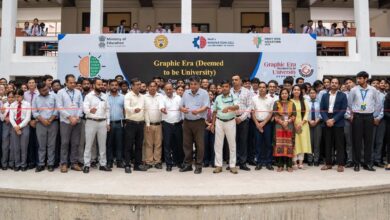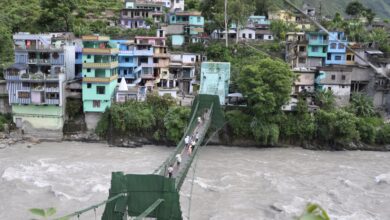Solar Kauthig Mela” to promote rooftop solar in Uttarakhand concludes

Solar Kauthig Mela” to promote rooftop solar in Uttarakhand concludes
Dehradun , Dec 17
Uttarakhand Chief Minister of Uttarakhand Pushkar Singh Dhami inaugurated the “Saur Samriddh Uttarakhand” campaign in the first session of the two-day “Solar Kauthig Mela” on Moday, which underlines the transformative potential of rooftop solar in the state’s energy transition. In his address, Chief Minister highlighted the economic and environmental benefits of rooftop solar, and mentioned its potential to improve energy access, savings and local employment generation. He said, “Under the Uttarakhand Solar Policy 2023, we have set an ambitious target of installing 2500 MW solar capacity by the year 2027. In this, 1400 MW capacity is to come from distributed solar. We are ahead of this year’s target in installing rooftop solar under the ‘PM Surya Ghar Yojana’ in the state. By December, we have installed about 10500 rooftop solar.” Apart from this, he also emphasized on moving forward in the direction of Gross Environmental Product .
On the first day, R Meenakshi Sundaram, Energy Secretary, Uttarakhand Government, said in his welcome address, “There are abundant possibilities for rooftop solar in the hilly areas of Uttarakhand. We have given priority to distributed solar energy in the solar energy policy. For this, we are also giving additional subsidy at the state level from the Center and have also simplified the processes. “Solar Samridh Uttarakhand Abhiyan” has also been started to reach this scheme to more people. We hope that with public cooperation, the state will be able to achieve its goal of clean energy.
On the second day today, 17 December 2024, important issues related to rooftop solar were discussed in which Additional Secretary (Energy) and Director UREDA, Ranjana Rajguru, Managing Director, UPCL, Chief Development Officer, UREDA and Chief Engineer, Solar Cell shed light on the related topics. The Energy Department of the Government of Uttarakhand is running this campaign in collaboration with Uttarakhand Power Corporation Limited (UPCL) and Uttarakhand Renewable Energy Development Agency (UREDA) and as a knowledge partner, leading think tank Council on Energy, Environment and Water (CEEW) is supporting it. One of the main attractions of this program was the inauguration of a mobile solar van, which will travel around Dehradun and other cities and demonstrate rooftop solar systems. The van will answer consumer queries on the technology and its financing (subsidies and bank loans etc.) and also demonstrate the simple application process.
The ‘Solar Samridh Uttarakhand Abhiyan’ aims to bring rooftop solar into the mainstream by showcasing the convenience and savings it offers to households and businesses. The tagline of the campaign “Install Rooftop Solar in PM Surya Ghar Yojana, Save Electricity Bill” reflects its focus on simplifying the process of adopting solar energy through user-friendly processes and financial benefits of clean energy production. The inaugural event saw panel discussions on two key themes “Accelerating Uttarakhand’s Energy Transition: Unlocking the Potential of Rooftop Solar for Economic and Climate Resilience” and “Greening the Rural Economy through Solarization”. Energy sector experts and policy makers, Additional Secretary Energy and Director UREDA, Ranjana Rajguru, Managing Director UPCL Anil Kumar Yadav, who spoke during these discussions, focused on the role of solar energy in promoting sustainable economic development and meeting the diverse geographical and energy needs of Uttarakhand.
“Solar Kauthig” has brought together policy makers, solar developers, manufacturers, DISCOMs and financial institutions, so that consumers can get complete information about adopting solar energy. It has highlighted the various benefits of rooftop solar, which include ease of installation, central and state government subsidies as well as long-term savings on electricity bills. Apart from this, mural art has also been created on the rooftop solar system, so that the curiosity of the common people about renewable energy can be aroused and they can be encouraged to do in-depth research about solar energy solutions.
‘Solar Samridh Uttarakhand Abhiyan’ is in line with Uttarakhand’s Solar Policy 2023, which aims to achieve 2,500 MW solar capacity by 2027, including 1,400 MW capacity from distributed solar systems. The policy aims to make rooftop solar the cornerstone of the state’s energy transformation. According to a CEEW study, Uttarakhand has a potential of about 1 GW of rooftop solar on residential roofs, which the campaign aims to bring to the ground through widespread adoption of rooftop solar and contribute to achieving these ambitious goals. In the closing session of the two-day Solar Kauthig, various companies gave presentations on the solar energy-based modernization going on in the country and state.
T






